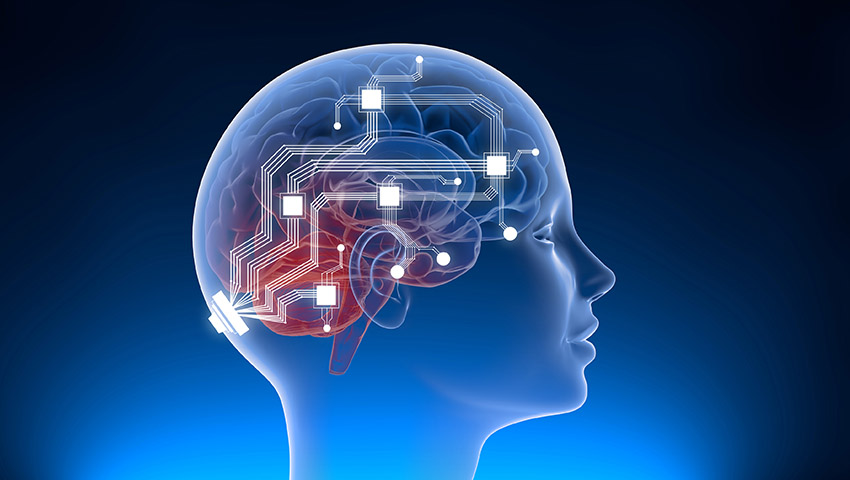Neuralink is a startling, sci-fi-esque technology company backed by Elon Musk and a team of bright sparks. Founded in 2016, the company is driven to create brain implants to treat a range of neurological disorders along with an interface between the user’s brain and digital devices.
The company states its mission clearly,
“Create a generalised brain interface to restore autonomy to those with unmet medical needs today and unlock human potential tomorrow.”
Perhaps you’ve heard of Neuralink in your social media news grazing, but do you really know what it is and how it might change the world?
What’s Neuralink and what does the implant intend to do?
Neuralink is a technology company that’s primarily focused on creating and implanting a computer chip into the human brain to allow direct computer/brain connectivity. So yes, we’re talking about the first cyborgs.
The chip or implant itself, also known as ‘The Link’, is designed to be surgically implanted into the user’s cranium to pick up on neural signals.
Once implanted, the device can be used to transmit neural signals to phones or computers, allowing interaction and manipulation. The breakthrough will mean that people with paralysis or visual impairment can achieve a multitude of modern tasks and processes without the use of their digits or vision, by working a device.
At least initially, the technology’s intended purpose is to help those with a range of conditions including paraplegia, motor issues and neurodegenerative disorders.
1. Restoring communication
The Link is set to open up a world of opportunities for those who find it difficult or impossible to use modern computers, digital devices, and phones – and the vast host of functions that these encompass – communication being a central contender.
From being able to send an SMS to starting an online business… the potential is immense.
“The first Neuralink product will enable someone with paralysis to use a smartphone with their mind faster than someone using thumbs,”
Musk said in April 2021.
2. Enabling new prosthetics
The device could also be used to control prostheses. Opening up an exciting new world of movement restoration for those with mobility issues, the possibilities multiply when looking at advancements and future realities of robotics or exoskeletons.
When you combine the ability to control electronic prostheses with the capability to manipulate digital devices with your thoughts, you’re truly staring down the barrel of a sci-fi imagined reality – the realm of the post-human – which could change the face of modern medicine and the possibilities of humankind.
3. Treating neurological disorders
But the possibilities of The Link go further than prostheses. The company hopes to treat neurological disorders by restoring neural activity. Seeking to restore regular unassisted locomotion for those with conditions such as spinal damage, the technology could one day in the not-so-distant future, enable people with spinal cord injuries greater mobility, and help cognition in people with Parkinson’s and Alzheimer’s disease. As Musk states,
“In the long term, it is possible to restore full body motion.”
How does the Neuralink brain implant work?
As Elon Musk framed it a recent Neuralink event,
“It’s kind of like Fitbit in your skull with tiny wires.”
The company states,
“The N1 Implant records neural activity through 1,024 electrodes distributed across 64 threads. Advanced, custom, low power chips and electronics process neural signals, transmitting them wirelessly to the Neuralink Application, which decodes the data stream into actions and intents.”
In terms of implanting the chip, at present, the idea is to use a specially designed robot to perform low-impact surgery as the surgery is too fine for human hands.
The basis of medical microchip technology has been around for a while now – you may have heard about monkeys using a mouse over a decade ago. But what we’re looking at now and for the future, is an FDA-approved, compact and advanced version of the older tech, with serious capacity for commercial uptake.
Mind-bending future applications…
Now that the conventional uses of The Link are out of the way… what about the weirder end of the scale? Namely, what does the company mean when they talk about ‘unlocking human potential tomorrow’?
If you extrapolate the basis of this technology and consider potential uses even further afield, we enter a bizarre new realm of the possible. We’re likely going to start having serious discussions around the nature of ‘the human’ pretty soon.
Straight off the bat, we could start seeing memories recorded and downloaded.
“I mean this is obviously sounding increasingly like a black mirror episode but yeah essentially if you have a whole brain interface, everything that’s encoded in memory you could upload you could basically store your memories as a backup and restore the memories. Then ultimately you could potentially download them into a new body or into a robot body. The future is going to be a weird one!”
said Musk.
Of course, what’s not being spoken about (at least not liberally on Twitter) is the potential for disaster. What if The Link malfunctions and causes unintended movements occasioning injury or death of the user or another person? What if it causes new cognitive impairment? Where does the legal system fit in here?
As with any application-connected hardware, surely it could well be possible to purposefully hack and control another person. What happens if a nefarious actor gains control of a Neuralink user’s mobility? What if their communication outputs are interfered with?
Yes, the future is going to be a weird one Elon, but there’s a lot of serious contemplation necessary before it becomes dystopian.




